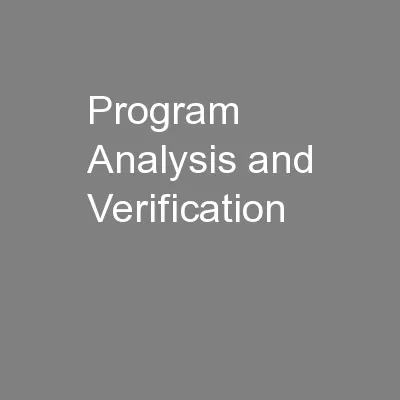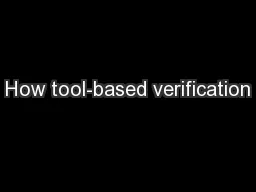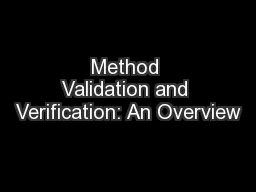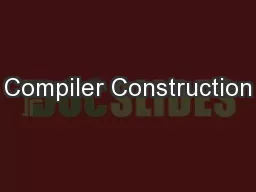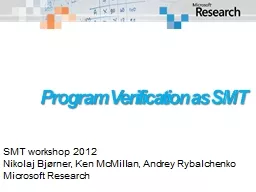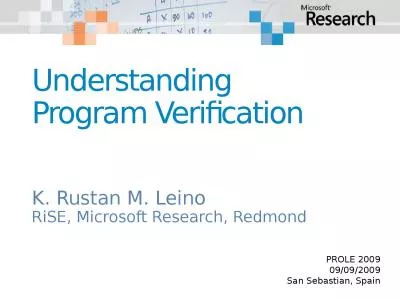PPT-Program Analysis and Verification
Author : cheryl-pisano | Published Date : 2016-03-18
0368 4479 httpwwwcstauacilmaonteaching20132014paavpaav1314bhtml Noam Rinetzky Lecture 4 Denotational Semantics Slides credit Roman Manevich Mooly Sagiv
Presentation Embed Code
Download Presentation
Download Presentation The PPT/PDF document "Program Analysis and Verification" is the property of its rightful owner. Permission is granted to download and print the materials on this website for personal, non-commercial use only, and to display it on your personal computer provided you do not modify the materials and that you retain all copyright notices contained in the materials. By downloading content from our website, you accept the terms of this agreement.
Program Analysis and Verification: Transcript
Download Rules Of Document
"Program Analysis and Verification"The content belongs to its owner. You may download and print it for personal use, without modification, and keep all copyright notices. By downloading, you agree to these terms.
Related Documents

